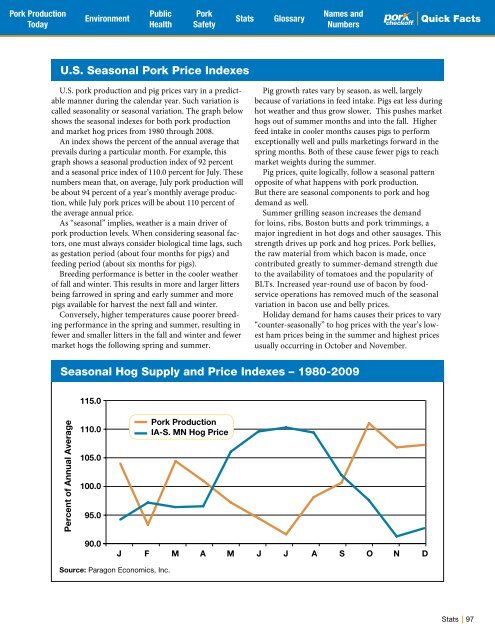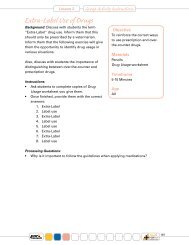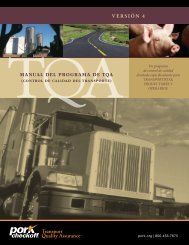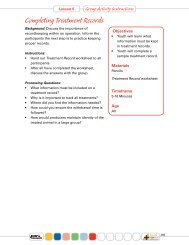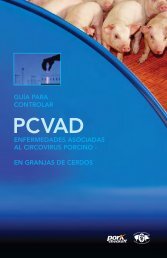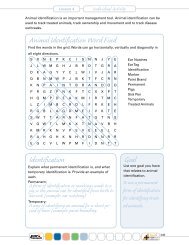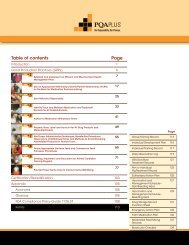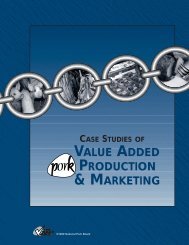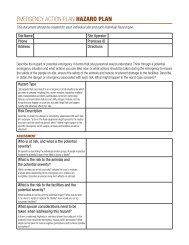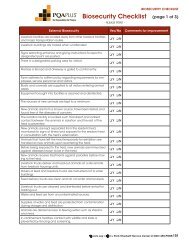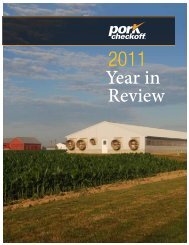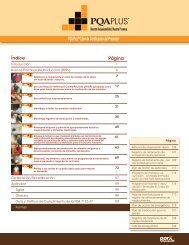The Pork Industry at a Glance - National Pork Board
The Pork Industry at a Glance - National Pork Board
The Pork Industry at a Glance - National Pork Board
Create successful ePaper yourself
Turn your PDF publications into a flip-book with our unique Google optimized e-Paper software.
<strong>Pork</strong> Production<br />
Public<br />
<strong>Pork</strong><br />
Names and<br />
Environment<br />
St<strong>at</strong>s<br />
Glossary<br />
Today Health Safety Numbers<br />
Quick Facts<br />
Quick Facts<br />
U.S. Seasonal <strong>Pork</strong> Price Indexes<br />
U.S. pork production and pig prices vary in a predictable<br />
manner during the calendar year. Such vari<strong>at</strong>ion is<br />
called seasonality or seasonal vari<strong>at</strong>ion. <strong>The</strong> graph below<br />
shows the seasonal indexes for both pork production<br />
and market hog prices from 1980 through 2008.<br />
An index shows the percent of the annual average th<strong>at</strong><br />
prevails during a particular month. For example, this<br />
graph shows a seasonal production index of 92 percent<br />
and a seasonal price index of 110.0 percent for July. <strong>The</strong>se<br />
numbers mean th<strong>at</strong>, on average, July pork production will<br />
be about 94 percent of a year’s monthly average production,<br />
while July pork prices will be about 110 percent of<br />
the average annual price.<br />
As “seasonal” implies, we<strong>at</strong>her is a main driver of<br />
pork production levels. When considering seasonal factors,<br />
one must always consider biological time lags, such<br />
as gest<strong>at</strong>ion period (about four months for pigs) and<br />
feeding period (about six months for pigs).<br />
Breeding performance is better in the cooler we<strong>at</strong>her<br />
of fall and winter. This results in more and larger litters<br />
being farrowed in spring and early summer and more<br />
pigs available for harvest the next fall and winter.<br />
Conversely, higher temper<strong>at</strong>ures cause poorer breeding<br />
performance in the spring and summer, resulting in<br />
fewer and smaller litters in the fall and winter and fewer<br />
market hogs the following spring and summer.<br />
Pig growth r<strong>at</strong>es vary by season, as well, largely<br />
because of vari<strong>at</strong>ions in feed intake. Pigs e<strong>at</strong> less during<br />
hot we<strong>at</strong>her and thus grow slower. This pushes market<br />
hogs out of summer months and into the fall. Higher<br />
feed intake in cooler months causes pigs to perform<br />
exceptionally well and pulls marketings forward in the<br />
spring months. Both of these cause fewer pigs to reach<br />
market weights during the summer.<br />
Pig prices, quite logically, follow a seasonal p<strong>at</strong>tern<br />
opposite of wh<strong>at</strong> happens with pork production.<br />
But there are seasonal components to pork and hog<br />
demand as well.<br />
Summer grilling season increases the demand<br />
for loins, ribs, Boston butts and pork trimmings, a<br />
major ingredient in hot dogs and other sausages. This<br />
strength drives up pork and hog prices. <strong>Pork</strong> bellies,<br />
the raw m<strong>at</strong>erial from which bacon is made, once<br />
contributed gre<strong>at</strong>ly to summer-demand strength due<br />
to the availability of tom<strong>at</strong>oes and the popularity of<br />
BLTs. Increased year-round use of bacon by foodservice<br />
oper<strong>at</strong>ions has removed much of the seasonal<br />
vari<strong>at</strong>ion in bacon use and belly prices.<br />
Holiday demand for hams causes their prices to vary<br />
“counter-seasonally” to hog prices with the year’s lowest<br />
ham prices being in the summer and highest prices<br />
usually occurring in October and November.<br />
Seasonal Hog Supply and Price Indexes – 1980-2009<br />
115.0<br />
Percent of Annual Average<br />
110.0<br />
105.0<br />
100.0<br />
95.0<br />
<strong>Pork</strong> Production<br />
IA-S. MN Hog Price<br />
90.0<br />
J F M A M J J A S O N D<br />
Source: Paragon Economics, Inc.<br />
St<strong>at</strong>s<br />
97


